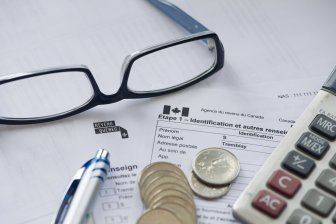After 16 years at the helm, Christy Clark’s B.C. Liberal government fell Thursday after a historic confidence vote in the legislature.

The defeat came 52 days after British Columbians went to the polls, with all 44 NDP and Green Party MLAs standing together to support an NDP motion that the Liberal government — with its 42 MLAs — did not have the confidence of the legislature.
Clark resigned as premier and Lt.-Gov. Judith Guichon invited NDP Leader John Horgan to try to form a government.
What is the confidence vote?
The confidence vote (also known as the vote of no confidence or no-confidence motion) is part of the Canadian parliamentary system’s framework for responsible government. This means the government not only has to be responsible to the people but to the House of Commons and the Legislative Assembly as well.
It can take place at the federal or provincial level, but in order to be successful, confidence votes normally only happen when there’s a minority government as they require the approval of a majority of MPs or MLAs to pass.
A vote of no confidence can also come through defeating an important bill or budget.
WATCH: PC party calls on NDP to support no-confidence motion
If the government loses a vote of confidence, two things can happen: a new election is called, or another party or coalition is given a chance to form the government. On the federal level, it is up to the Governor General to make this decision. On the provincial level, it’s up to the lieutenant governor.
This is what happened Thursday in B.C. The NDP and Green Party tabled an amendment to the throne speech that declared the legislature does not have confidence in the government. Christy Clark asked Guichon to dissolve the house and call an election. Instead, the lieutenant governor invited Horgan to form a government.
Confidence votes in Canada
At the federal level, six governments that lost confidence votes: Arthur Meighen’s in 1926, John Diefenbaker’s in 1963, Pierre Trudeau’s in 1974, Joe Clark’s in 1979, Paul Martin’s in 2005 and Stephen Harper’s in 2011.
- Freeland set to table 2024 federal budget in the House of Commons
- All a-boot tradition: A look at finance ministers’ budget shoes through the years
- Inflation ticked higher in March. Are Bank of Canada rate cuts still in the cards?
- Food service strike: Air Canada, WestJet refine menus at Toronto Pearson
In 2011, the opposition parties held the prime minister in contempt of parliament in a 156-145 vote for failing to disclose the full financial details of his “tough-on-crime” legislation, corporate tax cuts and plans to purchase fighter jets.
It triggered an election and the Conservatives won a majority government.
In 2005, a no-confidence motion brought down Paul Martin’s Liberal government. A federal election was held months later, and Harper’s Conservatives won and stayed in power until 2015.
In 1974, the House of Commons passed a motion of no confidence and brought down Pierre Elliott Trudeau’s Liberal government. It opened the way for a new election, which the Liberals won, going from a minority to a majority government.
— With files from




Comments